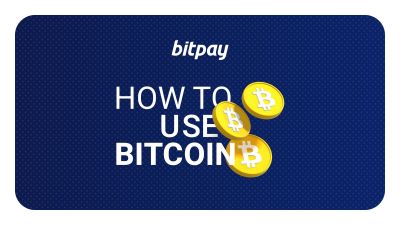– Crypto wallets manage cryptographic keys essential for blockchain transactions, with distinctions among wallet types including hot (internet-connected) and cold (offline), as well as custodial (third-party control) and non-custodial (user control).
– Wallets facilitate secure cryptocurrency transactions by using public keys to receive funds and private keys to authorize spending, ensuring ownership validation and security without centralized oversight.
– Security measures for wallets emphasize the importance of protecting private keys and incorporating features like multi-signature technology, which requires multiple approvals for transactions to enhance security.
– The selection of a wallet should be based on individual needs such as desired security level, transaction frequency, and additional functionalities like support for decentralized applications or multiple cryptocurrencies.

Without a cryptocurrency wallet, there’s no way to interact with blockchains and digital assets. A wallet provides a way for users to send and receive crypto. There’s much more to a crypto wallet than there may seem, though. Many different types of wallets exist. Some serve particular use cases better than others, while some features may be a matter of user preference.
Here we’ll cover questions like what is a crypto wallet, how do crypto wallets work, and how to choose the right cryptocurrency wallet(s) for your needs.
What is a cryptocurrency wallet?
A crypto wallet is a virtual place to store cryptocurrency. It is a piece of software or hardware that serves as a digital gateway to accessing and interacting with the blockchain. Wallets allow for the management and use of digital assets: buying, storing, spending, swapping, and making p2p transactions.
Just as a bank account allows you to store, manage, and access your money, a crypto wallet provides a similar function for your digital assets, serving as the interface to your financial interactions on the blockchain. While your bank account is operated and maintained by a financial institution, a crypto wallet gives you personal control over your digital assets, emphasizing security and direct management without the need for a third-party authority.
How crypto wallets work
At their core, crypto wallets work by interacting with the blockchain to enable crypto transactions. Unlike a physical wallet, a crypto wallet doesn’t store currency in the traditional sense—it holds a set of cryptographic keys. This includes two types of keys: public keys that are shared and used to receive funds, and private keys that are kept secret and used to sign transactions. Keeping the private key secure is very important, as anyone with access to the private key can take control of the entire balance of a wallet.
When you want to receive cryptocurrency, you share your public key (or wallet address) with the sender. To send crypto, you sign the transaction with your private key, which then gets broadcast to the network for validation. Once included in a block, the transaction will then be added to the blockchain. This cryptographic process ensures transactions are secure and ownership of coins is validated without the need for a centralized authority.
Types of Cryptocurrency Wallets
There are various types of crypto wallets, each offering different levels of convenience and security. At a broad level, wallets can be categorized in two major ways:
- Hot vs cold: Is the wallet connected to the internet?
- Custodial vs self-custody: Who controls the private keys of the wallet?
Hot wallets are connected to the internet and provide quick access to funds, making them ideal for everyday transactions. These tend to be the least secure, most convenient wallets. Mobile wallets and desktop wallets are examples of hot wallets.
Cold wallets, on the other hand, are offline storage options that are more secure and suitable for long-term holding. One type of cold wallet includes hardware wallets, physical devices that store keys offline. There are also paper wallets, which are simply printouts of your cryptographic keys. Paper wallets were popular in the early days of crypto, but are rarely used today due to their difficulty of use and susceptibility to physical damage.
Another important distinction regarding different wallets for cryptocurrency involves custodial vs. non-custodial wallets (aka self-custody wallets). With a custodial wallet, the private keys are held by a trusted third party. Self-custody wallets allow users to hold their private keys directly, ensuring total control of assets.
Choosing the right crypto wallet
Choosing the right crypto wallet will depend on a user’s needs and preferences. Ask yourself questions like the following:
- Will the wallet be used for long-term storage, frequent transactions, or accessing dApps?
- How important is security vs convenience?
- What level of control do you want?
- Do you desire a wallet that comes with extra built-in features?
The BitPay Wallet, for example, allows users to buy, store, swap, sell, and spend crypto all in one place. As a self-custody mobile/desktop wallet, this could be ideal for those looking to transact with their crypto often and maintain total control of their assets.
On the other hand, users looking to store large amounts of crypto for the long term might prefer cold storage options like a hardware wallet like those by Ledger or Trezor.
Depending on your crypto assets and activity, it is perfectly acceptable – even recommended – to use various types of crypto wallets. Read more using multiple crypto wallets.
The best self-custody wallet for buying, storing, swapping and spending crypto
How to secure your wallet
Securing your private keys is of the utmost importance when it comes to crypto wallets. If someone gets access to your wallet, they can control the entire wallet balance and steal its contents. The best ways to secure a wallet can vary depending on the type of wallet.
For custodial wallets like mobile wallets and web wallets, first and foremost is choosing a reputable wallet provider. Kraken and Coinbase both have a clean track record as exchange wallet providers. Next, take advantage of all the security features that are provided by the exchange/provider. This can include ensuring you use a strong password, biometric app security, and 2FA.
For self-custody wallets, keeping the seed phrase safe is the most important way to protect private keys. A seed phrase consists of 12 or 24 words that serve as a way to restore a wallet in the event of loss or damage. As soon as you create your wallet, back up the seed phrase. Write these words down on paper, store them in a safe place, and never share them. Don’t store them digitally by taking a picture, writing in a document, or storing them in a password protector. Reputable self-custody wallet providers like BitPay will never ask you for your seed phrase! Save for next-of-kin situations, the only person who should have access to your seed phrase is you!
To distribute risk, consider using multiple wallets to avoid holding 100% of your crypto in a single location. A common practice among seasoned users is to hold most funds in offline cold storage while using an online hot wallet for smaller transactions. This might look like having a hardware wallet for long-term storage and a mobile or desktop wallet with a smaller balance.
Advanced wallet features and use cases
Crypto wallets can be used for more than just sending and receiving transactions. They also provide access to decentralized applications (dApps) like those used in decentralized finance (DeFi) and different Web3 apps. Things work this way because dApps are powered by smart contracts, and every smart contract function involves a blockchain transaction. Wallets initiate these transactions.
One of the most secure wallet features is what’s known as multi-signature or multi-sig. A multi-sig wallet requires transactions to be signed using two or more private keys, meaning no single party can control the wallet alone. It’s like a safe deposit box that requires two keys to unlock. For example, a user can have a 2-of-3 multi-sig wallet where one key is held on a mobile device, one on a hardware wallet, and another held by a trusted third-party service provider.
Go to Source
Author: The BitPay Team



